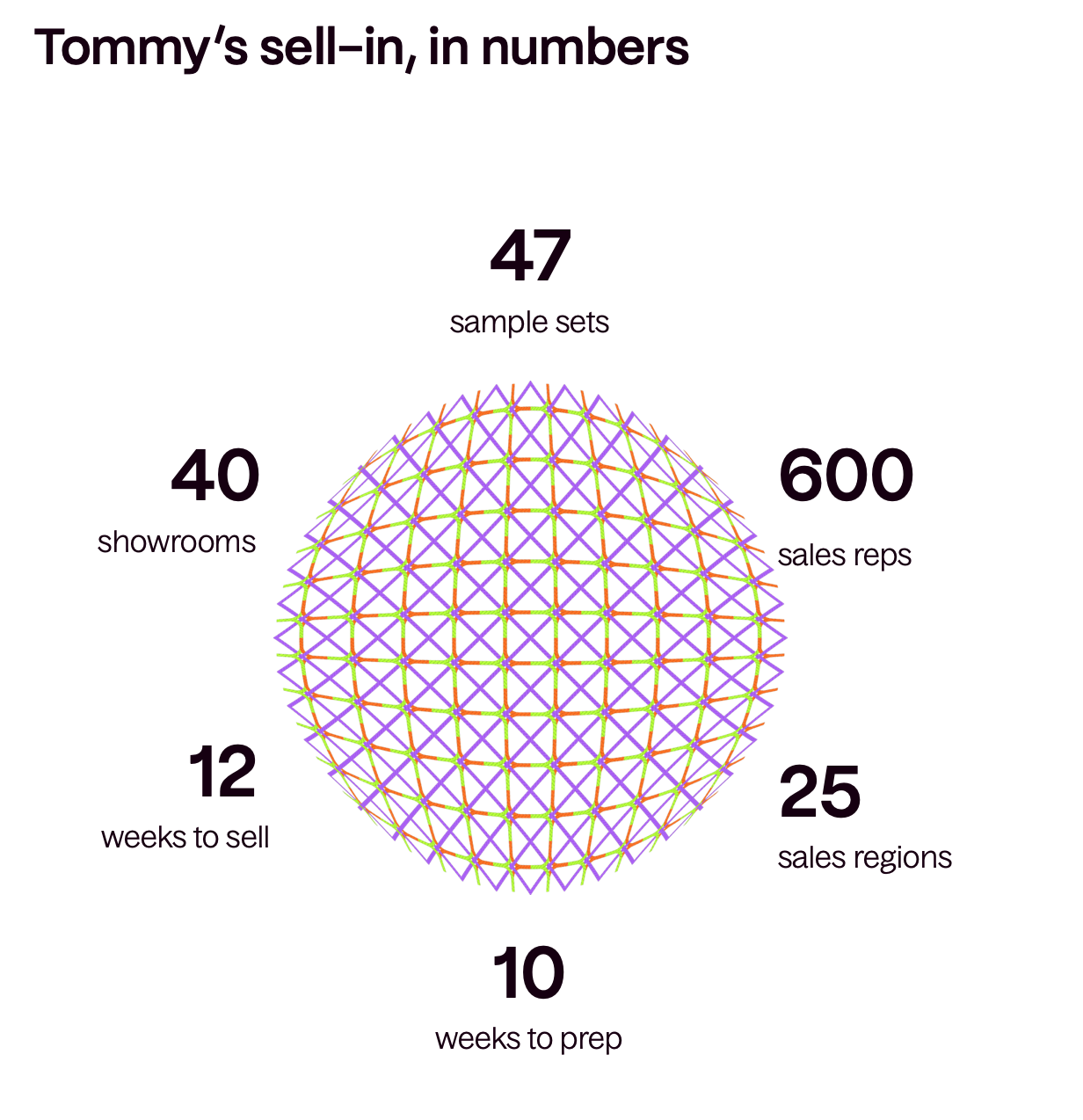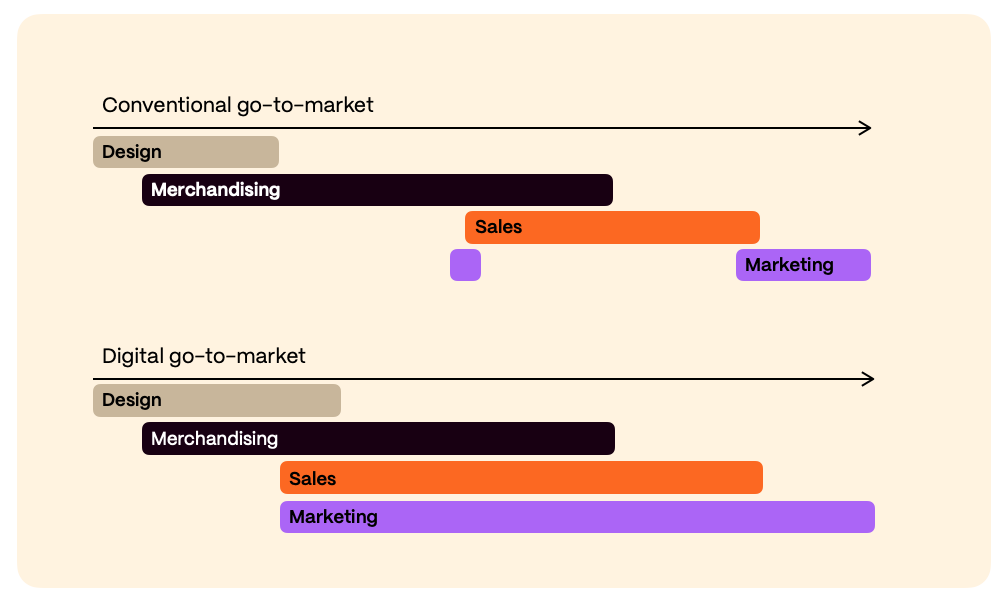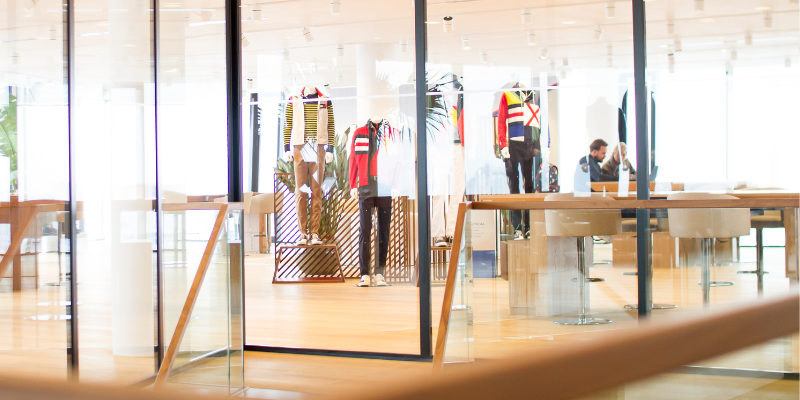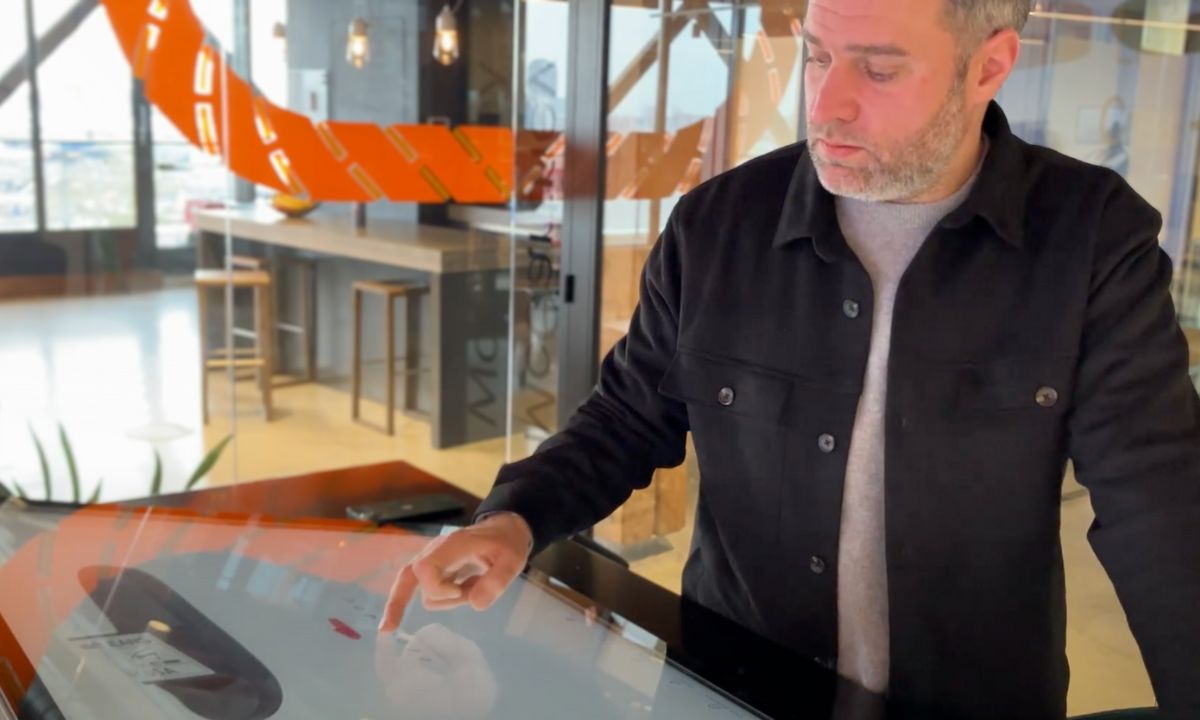Having an outstanding showroom experience is key for a global fashion brand. Expert retailers know that to delight the end-consumer you need to impress the buyers first. What if you add a digital component to astound your customers and optimize the experience?
In 2014, Tommy Hilfiger embarked on a journey to improve their sell-in experience digitally. Back then, nobody else in the industry saw the need for a change in this process. Why fix something that doesn't need to be fixed? The premium American lifestyle brand had started noticing signs of exhaustion within the wholesale channel and realised that digital solutions could be an opportunity worth exploring.
Due to an endless list of challenges in supply chain, fashion brands have acknowledged the need for change in order to become more efficient, sustainable, and continue to grow. Digital transformation was coming for the fashion industry and the team felt the urge to make the change happen for Tommy Hilfiger.
Drawing inspiration from other industries and B2C practices, they decided to use digital content to sell and refresh their go-to-market strategy. This is how Tommy Hilfiger and Stitch built the first digital showroom in fashion.
Read more: What is a Digital Showroom in Fashion?
Challenges in fashion wholesale
Back in 2014, wholesale was Tommy Hilfiger’s biggest revenue stream. Their strategy with a mix of new markets, as well as partnerships, helped them grow their wholesale channel. Despite this growth, the team at Tommy had noticed the process was breaking at its seams:
1. New markets generated new revenue, but also needed to be serviced. This meant that more showrooms and physical samples had to be set up and produced each season.
2. New key accounts brought new consumers, but also came with new requests. As a result, collections were increasing in volume at the expense of SKU productivity.
3. Bigger collections give buyers more choice when selecting assortments, setting off a chain reaction that can weaken the brand's positioning. The brand message is at risk to become diluted, which can result in inconsistencies across consumer touch points.
If Tommy wanted to keep growing, they had to do something. Sell-in as it was would sooner or later impact the long-term health of the business.
Whatever the solution, showrooms had to be a part of it. It's where buyers are introduced to new collections and finalise assortment selections. Showroom also allows sales reps to meet their clients, critical to building long relationships with them. The sell-in equation had to be more flexible, efficient and balanced, but how?





.png?width=1200&height=1200&name=Website%20-%20Customer%20Image%20Quotes%20(1).png)

.png?width=1280&height=720&name=Tommy%20Hilfiger%20Case%20Study%20(2).png)



